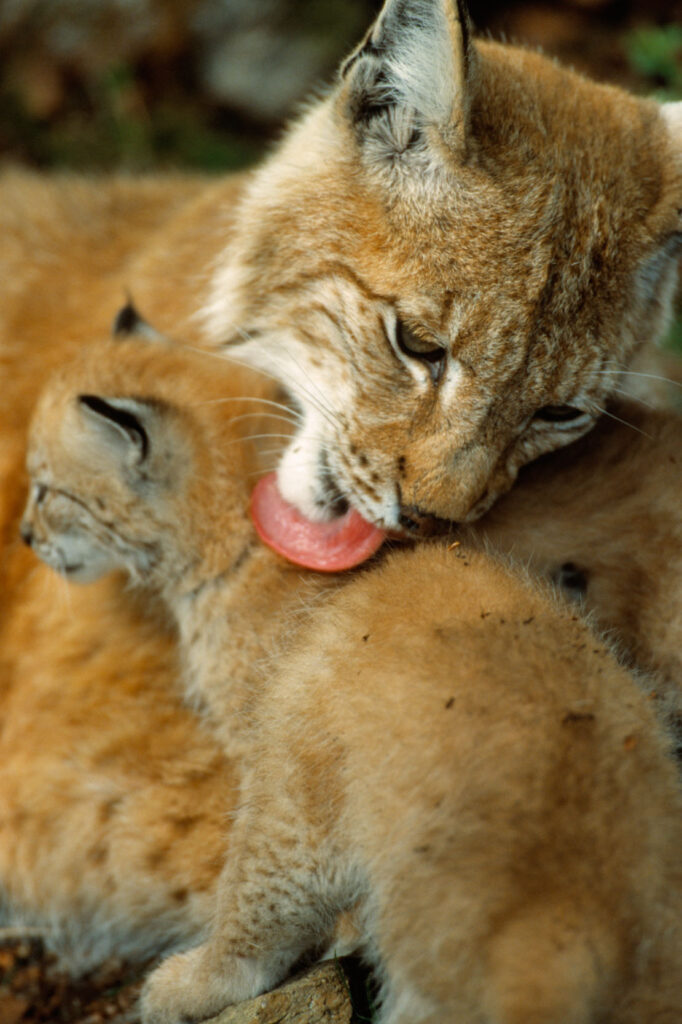“In 2010, there were 30 family groups of lynx in Uppsala county, about twice as many as today. There were not more attacks by lynx on domestic animals back then, nor did it lead to the extinction of the roe deer either. Nevertheless, 10 lynx are now listed to be killed in licensed hunting in March 2024” (Opinion piece published in Enköpingsposten).
Extremely few sheep lost to lynx
“There are around 16,000 sheep in Uppsala County. During 2023, only four have died from being attacked by lynx. One hunting dog has been bitten by a female lynx defending her cubs, but the dog was fine after a few days. It is hardly possible to claim that the lynx in the county create any major problems with domestic animals.
There is no reasonable motif to hunt the publicly very loved lynx. It’s even illegal.
The lynx is a strictly protected species according to the EU species and habitats directive. If you read the directive, it is clear that quota or licensed hunting is not permitted for strictly protected species. Do EU directives also apply in Sweden?
The lynx is the most popular of the large predators among the wide public. In a large opinion poll from the Swedish University of Agriculture in 2020, eight out of ten people were positive that there are lynx in Sweden. The respondents live in regions that have large predators and a majority of them were also positive to having lynx near where they live. Perhaps the public understands the role lynx can play in nature?
Sweden’s responsibility for the survival of the lynx
Lynx feed primarily on roe deer and hares but can also take fallow deer and wild boar piglets and it contributes to regulate the populations of wild herbivores. If there are more lynx, the risk for wildlife traffic accidents decreases. The co-existence between predator and prey is ancient. It is much easier for the lynx to take sick or weak animals, which makes it more difficult for various diseases to spread among its prey species. The golden eagle, very rare in Uppland, eat the remains of the lynx’s prey. That’s how nature works.
Within the EU, lynx is primarily found in Sweden and Finland, but also more sporadically in the mountain areas of Southern and Central Europe. Sweden and Finland therefore carry a greater responsibility for the long-term survival of lynx in Europe.
So why should the lynx be hunted at all? They were close to extinction in Sweden a hundred years ago and since that time, the genetic variation among Swedish lynx is weak. To top it all off, the hunt is conducted during the lynx’s mating season. Many of the lynx shot are lynx cubs, born in April-May the previous year.
If it is not the thrill of the lynx hunt that motivates the hunters, perhaps it is the trophy. The shooter gets to keep the skin, just like when lions and tigers are killed by hunting tourists around the world. Hunting tourism for lynx is now also carried out in Sweden. Is this really how we want our Uppland lynx to end up? The socio-economic reasons with which the county administration justifies the hunt, seem to us to be paraphrases to excuse a trophy hunt.
The Swedish Carnivore Association has now appealed the license hunt in Uppsala County
The association believes that protective hunting of individual harmful individuals is sufficient and is a much more effective instrument for the co-existence of predators and domesticated animals, than license hunting is. Sweden is stuck in a management plan that is followed without regard to either ecology or ethics and which is rooted in a view of predators that makes us think of the 19th century. Remember that the lynx has existed in Scandinavia for over 12,000 years and during large parts of that time, it has not been hunted to any great extent – but in the 19th century it was hunted to extinction in Uppland.
Today, the lynx is red listed, because it is sensitive to hunting, legal or illegal, but it does not need to be hunted at all. We therefore choose to work within the framework of democracy and for biological diversity by appealing the county board’s decision on licensed hunting for lynx in 2024.”
Emil V. Nilsson
Regional leader, Swedish Carnivore Association, Uppsala County.
Maria Gardfjell
Chairman, Swedish Society for Nature Conservation, Uppsala County
Signe Provost
Member of the Wildlife Management Delegation, Uppsala County
Anders Lindström
Member of the Wildlife Management Delegation, Uppsala County
Links
